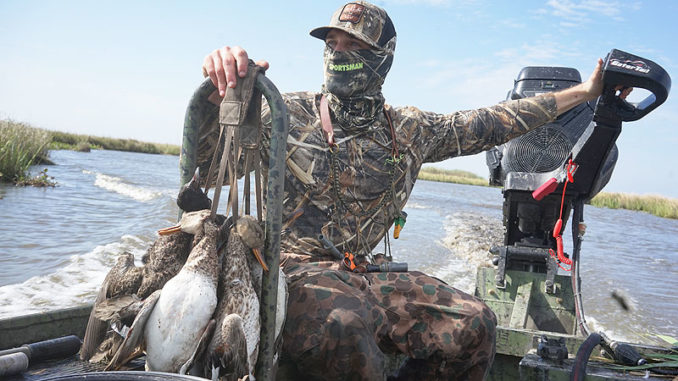
Warm, wet winter produced weak migration, biologists say
If you follow any Louisiana duck hunters on social media, you likely didn’t see too many glowing reports from the field this season featuring pictures of full straps and plentiful limits of birds.
In fact, you may have seen just the opposite: Lots of complaining and frustration over what many consider another disappointing duck season in Sportsman’s Paradise.
So exactly where are the birds? Are the flyways shifting? Has coastal erosion made Louisiana a less desirable wintering ground? Are changing agricultural practices in the midwest to blame?
To get some answers, we reached out to Tom Moorman, chief scientist with Ducks Unlimited, who addressed this season’s tough hunting conditions in a DU newsletter.
Mostly, a warm, wet winter was likely the culprit, according to Moorman. But things looked promising in November, when cold fronts and snowstorms in the northern part of the flyways created optimism for the season ahead.
“However, nature occasionally throws a curveball to duck hunters, and that certainly has been the case for many of us this season,” Moorman wrote in mid-January, indicating that predictions for a mild winter for much of the eastern half of North America seemed to be on the mark. “Open water and little snow cover are present across most of the United States. Wetlands and related food resources for waterfowl are available essentially from Nebraska east through Iowa, Illinois, Indiana, Ohio, southern Michigan, Pennsylvania, southern New York and Massachusetts. As of Jan. 7, the snow and ice line was located at approximately 40 degrees north latitude. Such conditions make it a challenge to pinpoint waterfowl distribution, but it is reasonable to conclude that waterfowl are widely scattered across a very large area in the Central, Mississippi and Atlantic Flyways.”
During a mild, wet winter like the one Louisiana experienced through mid-January, Moorman said many species of waterfowl stay as far north as habitat conditions allow.
“This ‘strategy’ theoretically enables the birds to minimize risk associated with migration and allows them to return to breeding areas as soon as possible in spring. For species like mallards and northern pintails, research suggests that females that return to the breeding grounds and establish nests earlier are more successful at hatching a clutch of eggs,” he wrote. “Thus, the birds themselves appear to be ‘wired’ to migrate only when necessary. This year, mild winter weather—and especially a lack of ice and snow cover—is enabling waterfowl to sit tight in more northern latitudes.”
Even in locations where birds are more plentiful, Moorman said hunter success hasn’t really been consistent.
“This likely reflects mild temperatures that do not require birds to move much in search of food, and may also reflect widespread habitat availability associated with frequent precipitation,” he said in the article.
That jives with observations by Larry Reynolds, the waterfowl study leader for the Louisiana Department of Wildlife and Fisheries, who noted that January’s aerial survey estimated 2.05 million birds in the state — 31 percent below the long-term average.
For duck hunters wondering about specifics as to why the season was poor, Reynolds shared his thoughts.
“Why is that? Because of above-average temperatures and an extreme amount of water on the landscape up and down the Flyway,” he said. “It’s pretty much exactly what you would expect.”
He pointed out how mallard band recovery patterns reflect how weather patterns impact migration.
“What we see in mallard band recoveries is that when it’s cold and dry, the recovery distribution shifts to the south,” he said. “When it’s warm and wet, the recovery distribution shifts to the north.
“So we’ve had a warm, wet year and so what we would expect is a weaker migration (for Louisiana hunters).”


